#working distance
Text
Static Retinoscopy 101
Check out our latest article on the art of retinoscopy and test your knowledge in the skill activity included at the end! Only retinoscopy pros get 100%!
Static retinoscopy is a technique used to objectively measure the refractive error of the eye. This post looks at the basics of retinoscopy and provides a learning activity at the end to test your understanding and knowledge. This article is intended to supplement the information from university lectures and professional training and assumes a minimum of a novice understanding of retinoscopy…
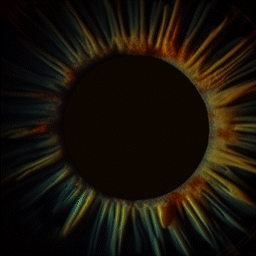
View On WordPress
#basic optometry#eye care#learning optometry#optometry#optometry student tips#optometry students#pre-registration students#retinoscopy#students#working distance
1 note
·
View note
Text
Choosing the Right Machine Vision Lens: A Comprehensive Guide
Machine vision technology has rapidly evolved, and selecting the appropriate lens for your application is now more critical than ever. With the wide variety of lenses available, choosing the right one can be a daunting task. However, by considering a few key factors, you can make an informed decision that will significantly impact the performance and image quality of your machine vision system. In this comprehensive guide, we will delve into the various aspects of selecting the perfect machine vision lens to meet your specific needs.
Fixed, Varifocal, or Zoom:
The first decision to make when choosing a machine vision lens is whether you need a fixed, varifocal, or zoom lens. Each of these options has its own set of advantages and is suited for different applications.
Fixed Lenses: Fixed lenses are an excellent choice when you have a consistent working distance and require sharp, high-quality images. These lenses have a fixed focal length, meaning they do not offer the flexibility to adjust the zoom or focus. If your application involves stationary objects or a controlled environment where the working distance remains constant, a fixed lens is a cost-effective and reliable choice.
Varifocal Lenses: Varifocal lenses are designed for situations where the subject is in motion or may require frequent refocusing. These lenses offer the flexibility to adjust the focal length and focus, making them ideal for applications that involve objects at varying distances. Varifocal lenses can save time and effort by allowing you to adapt to changing conditions without replacing the lens.
Zoom Lenses: Zoom lenses are the most versatile of the three options. They can adapt to distant subjects by changing the focal length, providing you with the ability to zoom in or out as needed. This adaptability is particularly valuable in applications where the working distance is not constant, or when you need to capture fine details in both nearby and faraway subjects. While zoom lenses offer flexibility, they are typically larger and more complex, which can result in a higher cost.
Focal Length and Focus:
The focal length of a machine vision lens plays a crucial role in determining the field of view (FOV) and the magnification of the image. Understanding how to choose the right focal length is essential for capturing the desired image.
Field of View (FOV): The focal length directly affects the FOV. A longer focal length will provide a narrower FOV, which means the lens will capture a smaller area with greater detail. Conversely, a shorter focal length lens will result in a broader FOV, allowing you to capture a larger area but with less magnification. When selecting the focal length, consider the size of the objects or areas you need to capture in your application.
Magnification: In addition to FOV, the focal length also determines the magnification of the image. Longer focal lengths result in greater magnification, making them suitable for applications where fine details are essential. Shorter focal lengths, on the other hand, provide lower magnification but are ideal for applications where capturing a larger area is a priority.
To choose the right focal length for your machine vision lens, you need to have a clear understanding of your application's requirements and objectives. Analyze the size and details of the objects you are inspecting to determine the optimal focal length for your specific case.
Aperture and Lighting:
The relationship between aperture and lighting is critical for achieving the desired depth of field and image quality in machine vision applications.
Aperture: The aperture of a lens controls the amount of light that enters the camera sensor. It is typically represented by an f-number (e.g., f/2.8). A smaller f-number indicates a wider aperture, allowing more light to enter, while a larger f-number means a narrower aperture, which restricts the amount of light. Selecting the right aperture is essential to achieve the desired depth of field.
Depth of Field (DOF): The depth of field is the range within which objects appear acceptably sharp in an image. It is influenced by the aperture size, with wider apertures producing a shallower DOF and narrower apertures providing a deeper DOF. The choice of aperture depends on your application's requirements. If you need to capture fine details in a specific focal plane, a narrow aperture might be suitable. For situations where multiple objects at varying distances must be in focus, a wider aperture may be preferable.
Consider the lighting conditions of your environment, the specific requirements of your application, and the depth of field you need to achieve when selecting the aperture for your machine vision lens.
Resolution and Accuracy:
When it comes to machine vision, resolution and accuracy are paramount. To ensure the best results, you must find a lens that offers the highest resolution for your subject or operation. Consider various factors, including image clarity, application demands, available options, and cost-benefit analysis.
Resolution: Resolution refers to the lens's ability to capture fine details in an image. Higher resolution lenses produce sharper and more detailed images, which can be crucial for applications that require precision, such as quality control and measurements.
Application: The specific application of your machine vision system will dictate the level of resolution required. If you are inspecting small electronic components, you will need a lens with exceptional resolution to detect defects. On the other hand, if your application involves monitoring large industrial processes, a lower resolution lens may suffice.
Cost-Benefit Analysis: While higher resolution lenses offer superior image quality, they can be more expensive. Therefore, it's essential to perform a cost-benefit analysis to determine the optimal balance between resolution and cost for your application.
By carefully considering these factors, you can select a machine vision lens that provides the resolution and accuracy required for your specific needs.
Working Distance:
Selecting the correct working distance is crucial when choosing a machine vision lens. Designers calculate the needed working distance using various factors, including focal length, the length of the inspected object, sensor size, and the size of the objects being observed.
Focal Length and Working Distance: The focal length of the lens plays a significant role in determining the working distance. A longer focal length results in a greater working distance, while a shorter focal length is associated with a shorter working distance. To ensure that the lens can effectively capture the desired field of view, it is essential to match the focal length to the working distance required for your application.
Object Size: Another factor to consider is the size of the objects you are inspecting. If your application involves large objects, you may need a lens with a longer working distance to maintain a suitable field of view.
By carefully calculating the working distance based on the focal length, object size, and other parameters, you can ensure that the lens you choose is perfectly suited to your application's requirements.
Sensor Compatibility:
Different sensors require different lenses, and it's crucial to select a lens that is compatible with your camera's sensor type and size. Sensor compatibility directly affects the image quality and the lens's ability to cover the desired field of view.
Sensor Size: The size of the camera sensor influences the field of view. Smaller pixel sensors require higher resolution lenses to achieve better image quality, as they capture more detail in a smaller area. In contrast, larger sensors require larger lenses to cover the same field of view.
Sensor Type: The type of sensor, whether it's a CCD or CMOS sensor, also plays a role in sensor compatibility. Different sensors have varying sensitivity to light and may require adjustments in the lens to optimize image quality.
When selecting a machine vision lens, consider the sensor size and type of your camera to ensure that the lens can effectively cover the desired field of view and produce high-quality images. Matching the lens to the sensor is essential for achieving the best results in your machine vision application.
Camera, Mount, and Location:
Compatibility with your camera and its physical location is another critical aspect of choosing the right machine vision lens. Ensuring that the lens aligns with the camera's sensor type and mount is essential for seamless integration.
Camera Sensor Type: Confirm that the lens is compatible with the sensor type of your camera, whether it's a CCD or CMOS sensor. Mismatched sensors and lenses can result in reduced image quality and potential compatibility issues.
Lens Mount: Different cameras use various lens mounts, such as C-mount or CS-mount. Ensure that your lens choice matches the camera's lens mount to facilitate easy installation. An incompatible mount can lead to alignment problems and may require additional adapters or adjustments.
Camera Location: Consider the physical location of the camera in your machine vision system. If the camera is difficult to access, you may want to opt for a lens with remote focus, iris, and zoom control capabilities. For instance, the LensConnect Series offers power and control through USB, allowing you to remotely adjust focus, zoom (in the case of varifocal lenses), and iris. This feature can simplify camera setup and maintenance, particularly in industrial or hard-to-reach environments.
Choosing a lens that seamlessly integrates with your camera and its location is essential for ensuring the optimal performance of your machine vision system.
Conclusion:
Selecting the right machine vision lens is a crucial decision that directly impacts the performance and image quality of your vision system. Before making your choice, consider the following key factors:
Fixed, Varifocal, or Zoom: Determine whether your application requires a fixed, varifocal, or zoom lens based on the working distance and subject characteristics.
Focal Length and Focus: Choose the focal length that aligns with your field of view and magnification requirements.
Aperture and Lighting: Select the appropriate aperture to achieve the desired depth of field and image quality based on your lighting conditions.
Resolution and Accuracy: Consider the application's demands and perform a cost-benefit analysis to determine the required resolution for your lens.
Working Distance: Calculate the working distance based on focal length, object size, and other factors to ensure the lens effectively captures the desired field of view.
Sensor Compatibility: Match the lens to your camera's sensor type and size to optimize image quality.
Camera, Mount, and Location: Ensure compatibility between the lens and your camera's sensor type, lens mount, and the camera's physical location.
By thoroughly evaluating these factors and understanding your specific application's needs, you can make an informed decision and select the best machine vision lens to achieve exceptional results in your machine vision system . Information flows from the lens first, so choosing the right lens is a fundamental step in the success of your machine vision project.
To Know More About Machine Vision Lens Visit:http://mvrpl.com/index.html
#Machine vision lens#lens selection#focal length#aperture#resolution#working distance#sensor compatibility#image quality#camera integration#varifocal lens#fixed lens#zoom lens.
0 notes
Text
is herobrine behavior/lore not common knowledge anymore .... has the world really forgotten about the 2x2 tunnels .. trees with their leaves all gone ... the sand pyramids in the ocean ... the herobrine shrine that would apparently summon him ... the lost to time brocraft hoax livestream that further popularized herobrine as a concept (of which herobrine was just a painting from a texture pack, later removed to which the streamer would continue to act freaked out until the end) .. the original forum post from sometime in august 2010 that detailed encounters with a pseudo-player in the distance on a singleplayer world which included this screenshot
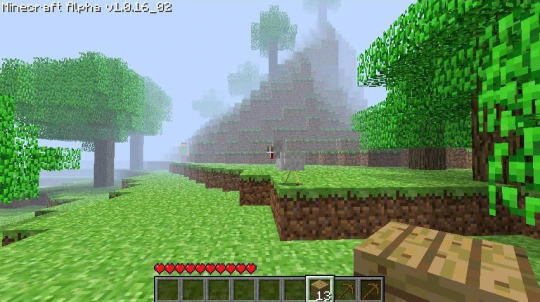
does anyone even care at all. about a herobrine so small
#minecraft#i cut the forum post contents short because i only enjoy it up to that point#such a fondness for the herobrine myth#it was simple but thats why it worked in the environment of alpha minecraft#minecraft - especially early versions - held with them a kind of inherit loneliness#it was a little barren. only a few mobs with very simple ai#limited amount of items. no hunger#the low render distance fog leading to somewhat of an eerie atmosphere. leaving you to wonder if theres anything else out there#the origins of this myth like. understood how to work with what this game was at the time to create a concept that you know. if you were a#young kid around this era then youd be wondering about herobrine in your own singleplayer world#s#hey remember when they forgot to add ''removed herobrine'' to the change logs#also remember when the community spent hours to find the seed from this screenshot and they actually did they found the herobrine seed
20K notes
·
View notes
Text
Genuinely being a single woman in my thirties, living alone, is such a mixed blessing sometimes. I do love my house and when I'm here I literally never want to leave. But on the other hand, I do get tired of leaving to go hang out with people, even though I love seeing them. Especially because I have such a great group of friends but they live all over the place, geographically, and therefore most of them don't know each other. And I actually really love hosting? But I never have people in my house because logistically it's always more practical for me to go to them than vice versa.
But sometimes I buy new old dishes and wanna just have a little fancy wizard party, but all my guests are far away. Please may I have the teleport spell. Or a high-speed commuter rail system.
#Hazard of moving to a city where i dont have people locally i guess#a very insular city at that#and honestly i am not lonely! I have lovely freinds! But I do miss the college days of everyone basically living in walking distance#in one city#as opposed to now#where DND takes me the width of the state on a weekly basis#usually the only time there are groups of people in my house is around christmas for the family holidays#and like...in the overall balance of my life this works#me going to my people is the logical choice#and its not a bad thing#but most of my friend groups are...local clusters where I am the out-of-towner these days#which again: fine; i knew that going in when I decided to move where I did and overall its the best call#but also sometimes I want to just load up the whole crew in detroit and tell them we're heading to mine this time#dont worry there'll be fancy little finger sammiches when we get there#just give me an excuse to use the wizard plates
1K notes
·
View notes
Text
i'm suddenly thinking about rockstar!eddie shooting a music video on some naval ship and meeting actual sailor!steve who's all dressed up in his whites 'cause eddie's a big name star and the captain said everyone had to look their best and eddie immediately folding for the pretty guy in uniform
just: eddie wanting a couple of the guys to act in the video 'cause hopefully then they'd actually know what they're doing, and asking the capt to point out his most competent sailor. the capt immediately points out one of his low-ranking ensigns (like, brand new baby officer 'cause that's the kinda shit an officer would pull) and eddie, having been raised by wayne (who i'm hc-ing as a navy vet) knows better and is immediately like "No sir, I said your most competent, not your least. someone point me to THE second class. Where's he? I need an enlisted guy." and a higher-ranking chief that's been following the band around the ship all day bellows out a laugh and says "You're gonna want Harrington, Mr. Munson."
idk idk, it's niche but for some reason my mind went into the cold clammy depths of my time in the navy this morning and i was like 'NOPE! don't wanna dwell here, make it fun! make it about the blorbos so you dont get sad!!' lmao
#the worms wormed a little bit this morning#i have a whole hc about the song for the video being one that jeff wrote about missing his gf while out on tour#but it's also just about long distance/missing someone in general and eddie's like 'ya okay i don't quite get it' but he's the lead singer#so he's gonna be the one headling the vid and they decide on a ship cause what else is that longing but missing your SO while on deployment#crossover of fic readers and those who have inside knowledge of the /actual/ inner workings of being on a ship is slim to none#but that sliver includes me lmao#does this count as lore?#i'm gonna say it does#noelle lore#steddie#steddie hc#steve harrington#eddie munson#rockstar!eddie#sailor!steve#sailor!steve x rockstar!eddie
1K notes
·
View notes
Text
Ted Wheeler sees the Byers and says, “Thank god you folks are back. Between the two of these kids, I thought I was going to have to take out a second mortgage just to afford my phone bill,” and has absolutely no idea the chaos he has just unleashed.
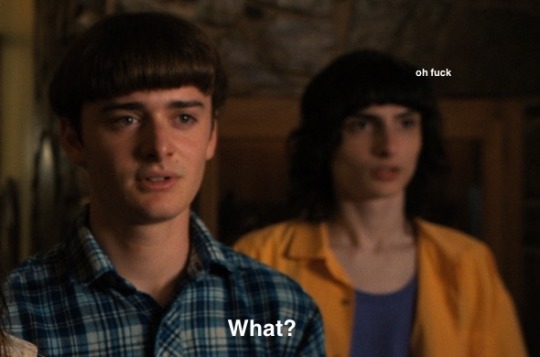
#I’ve probably made this joke before but it’s my fav Ted Wheeler headcanon#fun fact I had to research for this post: even if the byers ain’t answer it still would have cost hella money if he was calling all the time#and mans had to call the phone operator to make the call long distance#he was putting in the work#byler#mike wheeler#i know what you are#will byers#stranger things
1K notes
·
View notes
Text
I need Suvi and Indri to get together now
#pst#txt#wbn#wwwo#suvi gets one good roll in the hay per arc (should be more we'll work on it)#look i just need my ersatz ice queens to bond a lil#get some long distance fwb going#polyam wizard n witch style#silver's still important but we're not talking about him rn
323 notes
·
View notes
Text
Me cozied up watching one of my special interest shows while I avoid even the slightest bit of human contact

#autism#autistic#actually autistic#special interests#memes#autism memes#socialization makes me so irritable#genuinely I do not want to talk with anyone#but a lot of people make me feel obligated to so I force myself to#and end up irritated#I gotta work at distancing myself more for my sake
443 notes
·
View notes
Text

#topher bus#clone high#ch#twas headcanon that he still takes flat earth theory as a personal insult even though he's trying to distance himself from his clone-father#but google said this whole story actually wasn't historically accurate#anyhoo he has a pear shaped globe in his room. so it kinda makes this work on a completely different level
1K notes
·
View notes
Text
the only way i see a svsss live action that fully captures the insanity of shen qingqiu’s inner monologue is a fleabag-style aside where all the millenial/internet slang is dropped at 100 mph before it switches back to “oh… there goes the qing jing peak lord… so calm… so composed…”
#also i once saw an analysis of fleabag that positions that breaking the 4th wall is fleabag disassociating#which would work brilliantly with sqq as he constantly tries to distance himself from the reality of what he’s doing/what’s happening#first clue that shang qinghua is a transmigrator is that he notices sqq talking to the “camera”#scum villain’s self saving system#svsss#shen qingqiu#shen yuan
195 notes
·
View notes
Text
When Mads dissed Hugh for living in America because he misses him was so funny. Like aweeee, he wishes they lived closer together
He literally blamed Hugh’s kids being born in America
#I was gonna post this during the panel but I totally forgor#the distance between Denmark and New York is a lot though#so I totally get it#if my work husband lived across an ocean rather than the next county over I’d be mad too#hannibal#hugh dancy#mads mikkelsen#c2e2 2024#c2e2
193 notes
·
View notes
Text
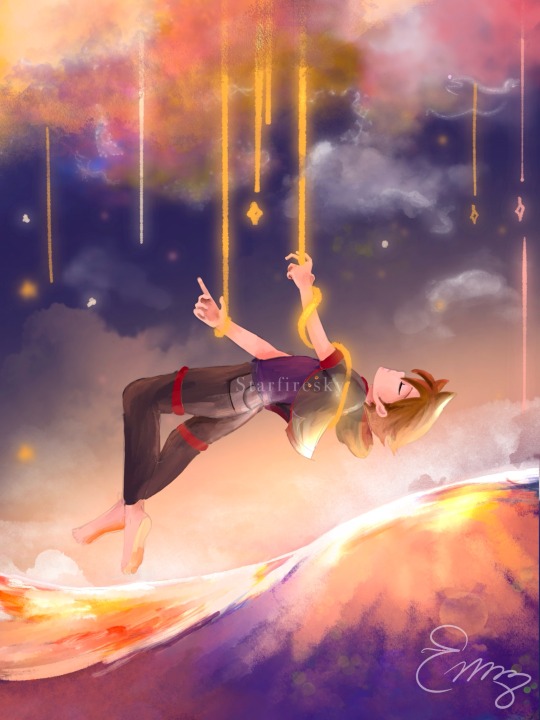
Dreams are not fiction, they inspire the next phase of reality ☁️✨
This piece is now available on my shop: here 💕
#kingdom hearts#kh#art#digital art#artists on tumblr#sora#gaming#fan art#my art#starfiresky#dreams#kh3#dream drop distance#ocean#clouds#so relaxed while working on this ☺️
167 notes
·
View notes
Note

cursed no tattoo machete (I'm sorry for doing this to him)
.
#!!!#I mean one person's cursed is the other one's aesthetic I think this is actually a look in itself and you can fight me on that#see this is what I mean when I say the black lids are an important part of his design#they pull a lot of weight in terms of how his face works and how clearly you can see his eyes#without them his expressions are a lot harder to read especially from a distance#he loses a lot of his sharpness#the white eyelashes though the eyelashes have me weak#over the years I've thought numerous times to myself “why don't I give him cute little blonde lashes those are pretty”#only to realize 0.5 seconds later it doesn't really work in his case#you win some you lose some#thank you! I had a good chuckle when I first saw this it was such an unexpected sight#your style is so painterly and soft looking#answered#gift art#alwaysoutofpaper#own characters#Machete#barefaced early morning Machete before the daily goth eyeliner routine
594 notes
·
View notes
Text
Ok so it's like.
The motorcycle scene: Touga is obviously imitating Akio and failing miserably. Represents an attempt at achieving maturity and adulthood through adopting empty symbols of power. Gives the impression of movement and progress, but in reality is going in circles. It gets faster and faster, there's a sense of danger and agitation. Touga is driving and Saionji sits in the sidecar, they're not on the same level and Saionji disapproves. Seems like they're heading towards some destination, but they're going nowhere.
The bike scene: A reference to their shared memories. Represents clinging to the past and trying to return to the time of childhood. The wheels may be turning, but the bike stands in place. It get slower and slower as Touga gets more tired until he finally stops completely. There's a sense of nostalgia and emotional fatigue. Touga is the only one pedaling, but Saionji doesn't comment on it (meaning that perhaps Touga being in control wasn't the problem in the first place. Maybe it was always about wanting to restore their lost connection and equal footing). They're facing opposite directions, but at the same time leaning on each other.
#sorry for posting about toxic lettuce x toxic ketchup it will probably happen again#their relationship is fascinating to me. they are both pathetic loser boys convinced that Masculinity is the key to winning at life#but it only pushes them further and further away from graduating#and because this neverending persuit of being the Perfect Man caused them to distance themselves from everyone#they have no one to turn to except each other. but even that doesn't really work cause at this point neither of them knows the other anymore#and the only things that keep them together are the memories of boyhood.#a time when they didn't have to be this way yet. when a certain degree of vulnerability and kindness was still allowed#and they're trying to make sense of it all#rgu#revolutionary girl utena#touga kiryuu#saionji kyouichi#moje
251 notes
·
View notes
Text
my posts asking about potential dadstarion have received literally every possible response which is both unhelpful and also reassuring that i can do whatever i like
#ramble#bg3#i think the best one was 'canon astarion? absolutely not. post-game astarion after decades with tav? perhaps'#followed by 'neil said so which means you should do it'#fuck me for trying to distance myself from being 'the dads guy' and just doing it again for another set of fictional men#you have no idea the hoops i'm jumping through to try and make this work#someone needs to take me by the shoulders and say 'hey juno you have an entire webcomic full of fictional dads is this necessary'#the answer will still be yes though
294 notes
·
View notes
Photo
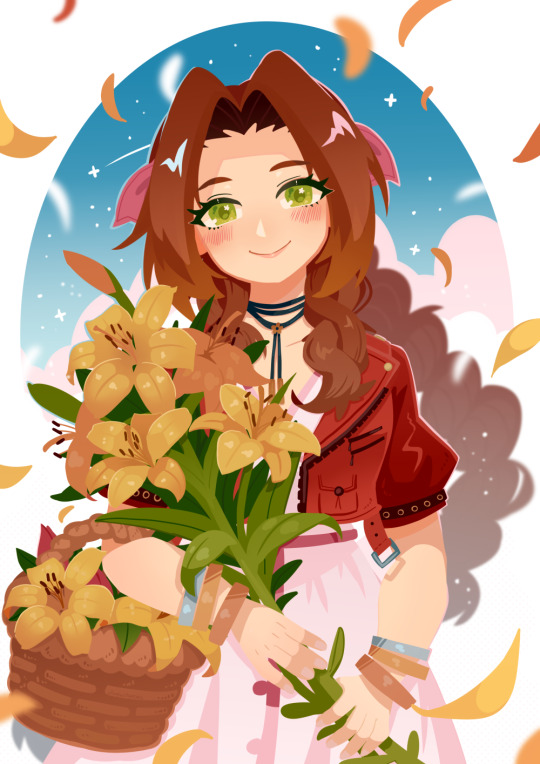
Day 3416 - 11 December 2022
💐
A commission for Leolee!
.//projectTiGER
#projecttiger#final fantasy vii#aerith gainsborough#commission things#HEHE TYSM AGAIIN!!!#UE UE UE.. MISS AERITH... I LOVE YOU..THIS WAS A TREAT TO WORK ON..#i have not actually gotten round to playing the remake yet i keep saying i will but its. been literal years#smooches aerith gently darling i love you and i wish you could have had a better- [ muffled crying in the distance ]
2K notes
·
View notes